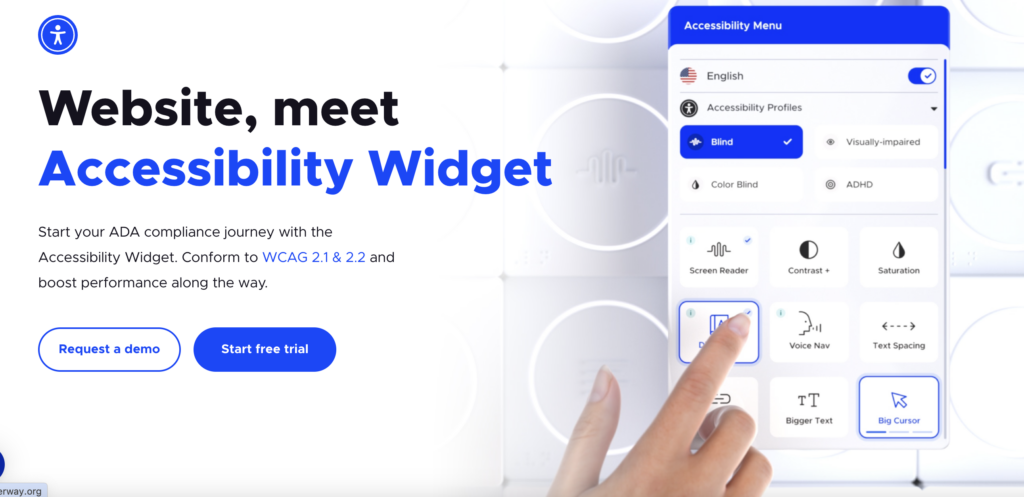If you run a local business, “near me” searches are one of the most powerful ways to attract customers. When someone searches for “coffee shop near me” or “best plumber near me”, Google prioritizes businesses that are optimized for local search.
In 2025, ranking for “near me” searches isn’t just about having a website—it’s about local SEO, Google Business Profile, and mobile optimization. In this guide, you’ll learn how to make your business show up when customers search for local services and how to outrank your competitors.
Why “Near Me” Searches Matter
Over 80% of local searches lead to a purchase or store visit. With voice search and mobile usage on the rise, people rely on Google, Apple Maps, and Yelp to find businesses closest to them.
If your business isn’t optimized for local searches, you’re losing potential customers to competitors who are. The good news? With the right strategies, you can improve your local search rankings and attract more foot traffic.
Step 1: Optimize Your Google Business Profile
Your Google Business Profile (GBP) is the most important factor in “near me” searches. If your GBP isn’t optimized, your business won’t show up.
How to Optimize Your Google Business Profile
- Claim & Verify Your Listing – Visit Google Business Profile and make sure your business is listed and verified.
- Use Accurate Business Information – Ensure your business name, address, and phone number (NAP) match exactly across all platforms.
- Choose the Right Categories – Select primary and secondary categories that accurately describe your business.
- Write a Keyword-Optimized Business Description – Include phrases like “best [business type] near me” naturally in your description.
- Add High-Quality Photos & Videos – Businesses with photos get 42% more requests for directions than those without.
- Enable Google Messaging – Allow customers to contact you directly via Google.
- Encourage Reviews – The more 5-star reviews you have, the higher you’ll rank in “near me” searches.
Step 2: Use Location-Based Keywords on Your Website
Google looks at your website content to determine whether your business is relevant for “near me” searches.
How to Optimize Your Website for Local SEO
- Include Your Location in Titles & Meta Descriptions – Example: “Best Coffee Shop in Miami | Freshly Brewed Espresso”
- Create Location-Specific Pages – If you serve multiple cities, make a separate page for each location.
- Embed Google Maps on Your Contact Page – This helps Google confirm your location.
- Use Schema Markup – Add Local Business Schema to your site so Google can recognize your address.
- Write Blog Posts with Local Keywords – Example: “Top 5 Spots for Brunch in Downtown Austin”
Step 3: Get More Local Citations & Backlinks
Local citations are online mentions of your business name, address, and phone number on directories like Yelp, TripAdvisor, and Facebook Business.
How to Build Local Citations & Backlinks
- List Your Business in Online Directories – Yelp, Bing Places, Apple Maps, and Yellow Pages.
- Partner with Local Blogs & News Sites – Get featured in local publications for backlinks.
- Join Local Business Associations – Chambers of Commerce often link to local businesses.
- Encourage Customers to Check-In – More check-ins on Facebook and Google increase visibility.
Consistency is key. Your business name, address, and phone number should match exactly across all platforms.
Step 4: Optimize for Mobile & Voice Search
Over 60% of “near me” searches happen on mobile devices. If your website isn’t fast and mobile-friendly, you’ll lose customers.
How to Optimize for Mobile & Voice Search
- Use a Responsive Design – Your site should work perfectly on smartphones and tablets.
- Improve Page Speed – Use tools like Google PageSpeed Insights to fix slow-loading pages.
- Write Conversational Content – Voice searches use natural language, so create content that answers questions like:
- “Where is the best Mexican restaurant near me?”
- “What’s the closest gym open now?”
- Use FAQ Sections – Add frequently asked questions to your site with long-tail keywords that match voice searches.
Step 5: Get More Reviews & Engage with Customers
Google prioritizes businesses with high ratings and recent reviews. Reviews boost credibility and make people more likely to visit your store.
How to Get More Google Reviews
- Ask Customers for Reviews – Send follow-up emails or SMS asking for feedback.
- Make It Easy to Leave Reviews – Share a direct Google review link on your website and social media.
- Respond to Every Review – Thank customers for positive reviews and professionally address negative ones.
A business with 100+ reviews and an average of 4.5+ stars will rank higher in “near me” searches than one with fewer reviews.
How Semrush Can Help With Local SEO
If you want to take local SEO to the next level, Semrush’s Local SEO tools can help you:
- Track your rankings for “near me” keywords.
- Find keyword opportunities to rank higher in local searches.
- Audit your website’s local SEO performance and fix errors.
- Monitor your competitors and see how they rank in local search.
- Optimize your Google Business Profile with keyword recommendations.

Starting from $30/month
Key Features
Manage local business listings across directories
Track and improve local search rankings
Monitor and respond to customer reviews
Why We Recommend It
Semrush Local helps small businesses get found online. It ensures your business information is accurate, boosts your local search rankings, and makes it easy to manage customer reviews all in one place.
Pros & Cons
- Simplifies local SEO management
- Increases visibility in local search results
- Easy-to-use tools for review monitoring
- Advanced features may feel overwhelming for beginners
- Costs can be high for very small businesses
Try Semrush’s Local SEO tools to optimize your website and GBP profile.
Final Thoughts: Dominate “Near Me” Searches
Ranking for “near me” searches isn’t complicated—it’s about optimizing your Google Business Profile, website, and local SEO strategy.
Quick Recap of Local SEO Strategies:
- Optimize Your Google Business Profile – Claim your listing, add keywords, and get reviews.
- Use Location-Based Keywords – Include your city name in titles, descriptions, and blog posts.
- Get More Local Citations & Backlinks – List your business on directories and collaborate with local sites.
- Optimize for Mobile & Voice Search – Make your website mobile-friendly and include FAQ sections.
- Encourage & Respond to Reviews – More positive reviews = higher rankings.
Local SEO is a long-term game, but the businesses that optimize early will dominate search results. Start applying these tips today, and watch your business grow with more local customers.





